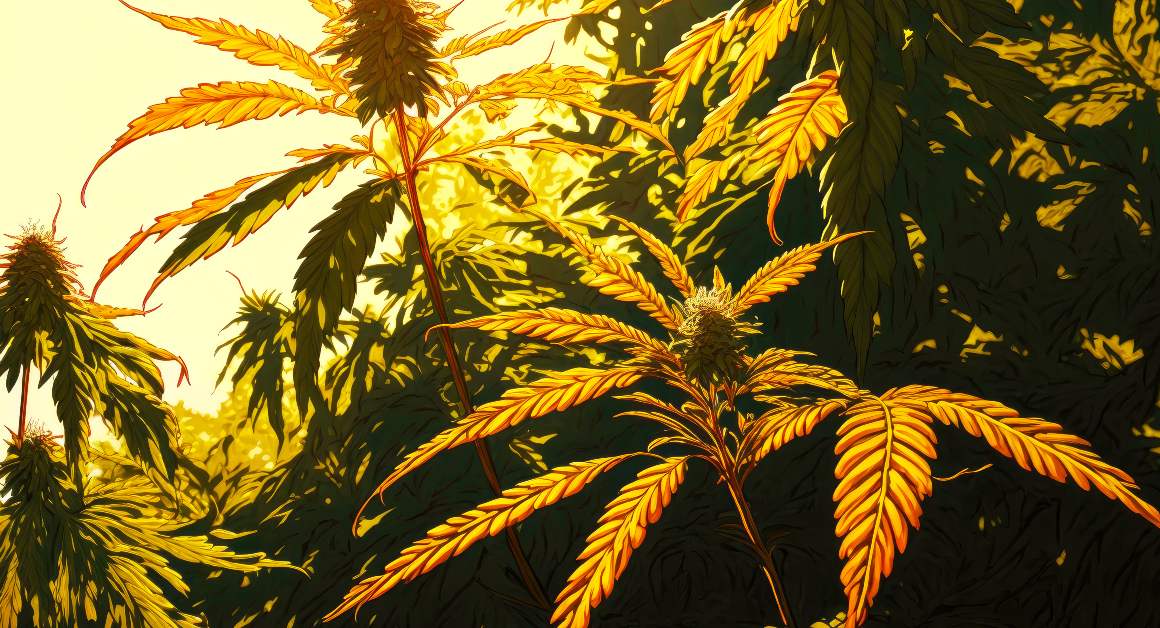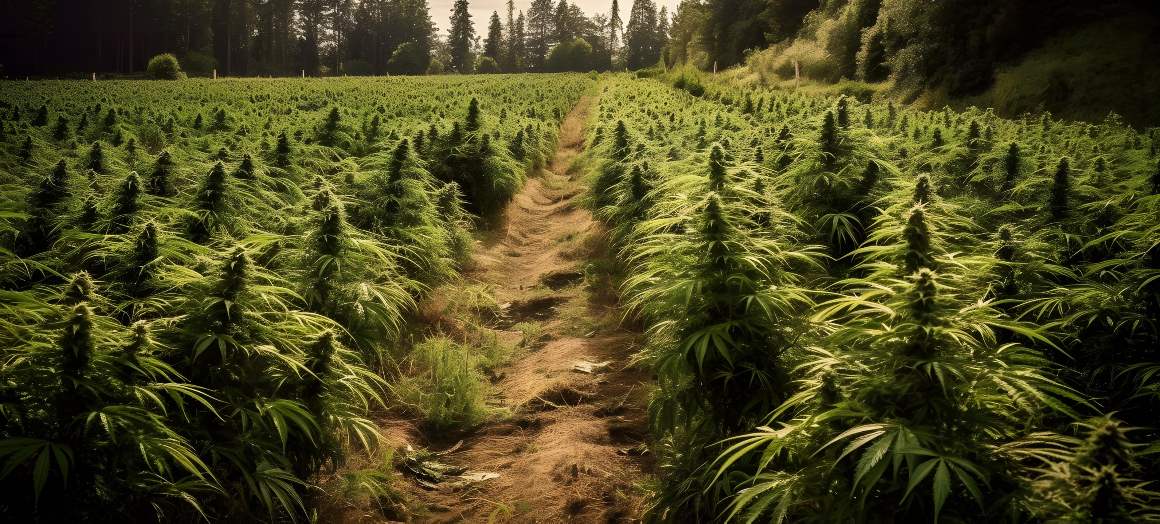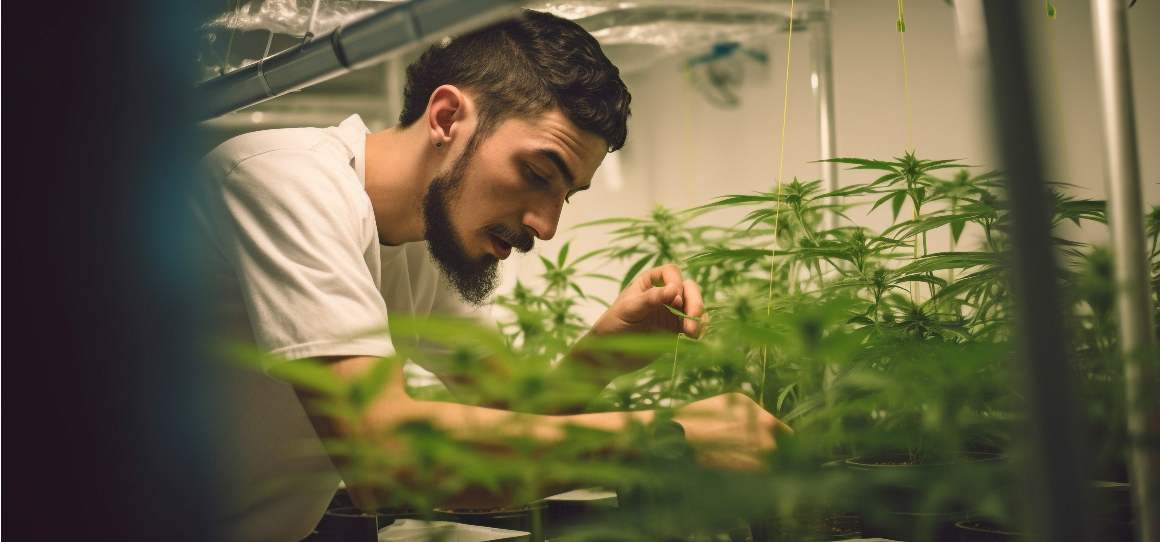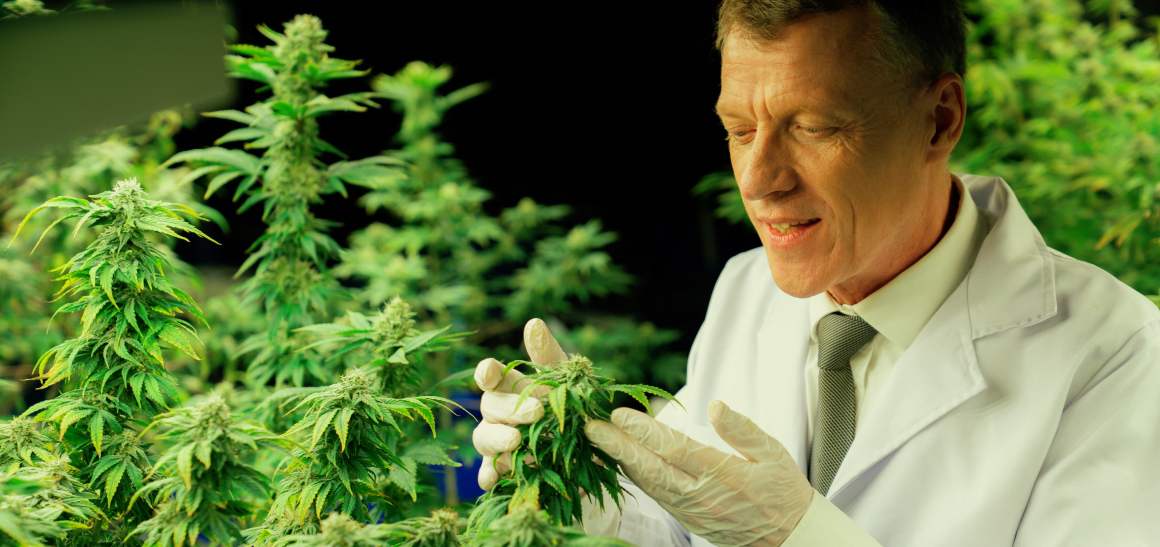What Are the Differences Between Marijuana and Hemp
Published:
When discussing the differences between marijuana and hemp, it's crucial to understand that both plants belong to the Cannabis genus. However, their distinct characteristics and applications set them apart in various aspects.
Contents:
- Chemical Composition differences between marijuana and hemp
- Cannabinoids: what are the differences between marijuana and hemp
- Effects of Varying THC Levels on Users
- Legal Distinctions Between Hemp and Marijuana
- Health Benefits of Hemp vs Marijuana
- Industrial Applications for Hemp
- Food Products Derived From Hemp
- The Global Cannabis Economy and Emerging Trends
- FAQs in Relation to What Are the Differences Between Marijuana and Hemp
- Conclusion
In this blog post, we will delve into the cannabinoid content differences between these two cannabis plants, specifically focusing on their THC and CBD concentrations. We'll also explore the legal distinctions between marijuana and hemp in different regions around the world.
Furthermore, we will discuss hemp's industrial applications such as textiles production, building materials manufacturing, and biodegradable plastics development. The nutritional benefits of hemp seeds cannot be overlooked either – they contain essential omega fatty acids and dietary fiber that contribute to overall health.
The role of CBD in health and wellness industry is another key aspect when examining what are the differences between marijuana and hemp. We'll touch upon popular forms of consumption like tinctures or edibles along with potential health benefits such as anxiety relief or sleep improvement.
Last but not least, our discussion will extend to future trends in the global cannabis economy – from advances in plant breeding techniques to innovations catering diverse consumer needs across expanding legal markets worldwide.

Chemical Composition differences between marijuana and hemp
Hemp and marijuana both belong to the Cannabis sativa L. species but have different chemical compositions. The primary difference lies in their THC concentrations, with hemp containing less than 0.3% THC and marijuana having higher levels responsible for psychoactive effects.
Cannabinoids: what are the differences between marijuana and hemp
The term cannabis refers to a group of three plants: Cannabis sativa, Cannabis indica, and Cannabis ruderalis. While all these plants are part of the cannabis genus, they differ in terms of their cannabinoid content. Hemp is primarily derived from Cannabis sativa strains that have been selectively bred for low THC content (
Effects of Varying THC Levels on Users
- Hemp: Due to its low THC concentration (
- Marijuana: Marijuana's higher concentrations of THC, which interact with our body's endocannabinoid system differently than CBD does, can lead to various psychoactive experiences such as euphoria or relaxation depending on the strain and individual user. Still, in some cases these effects may bring on impairment or unwanted responses, particularly when taken in large amounts.
Knowing the chemical contrasts between hemp and marijuana is critical for settling on educated decisions about which kind of cannabis plant to use as per requirements. By recognizing their unique cannabinoid profiles, consumers can better tailor their choices to achieve desired outcomes while minimizing potential risks associated with high THC content found in marijuana plants.

Legal Distinctions Between Hemp and Marijuana
The legal status of hemp and marijuana varies significantly due to their differing THC concentrations. While both plants belong to the Cannabis sativa L. species, hemp is distinguished by its low THC content (
Federal Regulations Governing the Cultivation and Use of Cannabis Plants
The 2018 Farm Bill removed hemp from the list of controlled substances, thus allowing for its regulated cultivation, processing and sale with less than 0.3% THC content. This act permits the regulated production, processing and sale of products sourced from hemp that contains less than 0.3% THC. Despite hemp being federally legalized due to its low THC content, marijuana remains a Schedule I drug as it contains higher concentrations of the psychoactive compound.
State-Level Legislation Affecting Legality
Beyond federal laws governing cannabis plants like cannabis indica, cannabis ruderalis, and cannabis sativa, individual states have enacted their own policies regarding medical cannabis usage and recreational marijuana consumption. As such, legality may vary depending on local jurisdiction. For instance, some states allow for medicinal purposes only while others permit adult-use sales alongside strict regulatory frameworks. It's essential for consumers to familiarize themselves with applicable state-level rules before purchasing or using any form containing CBD extracted from either plant source.
In conclusion, understanding the legal distinctions between hemp and marijuana is crucial for both consumers and businesses operating within this rapidly evolving industry. By staying informed about federal regulations and state-level legislation, individuals can make well-informed decisions regarding their use of cannabis-derived products.
Health Benefits of Hemp vs Marijuana
Both hemp and marijuana contain cannabinoids like CBD, which offer potential health benefits without causing impairment. Products made from industrial hemp are the only ones legally allowed to be sold nationwide as dietary supplements or food additives.
Potential Therapeutic Applications of CBD Derived From Either Plant Source
CBD derived from both hemp and marijuana plants has been shown to have numerous therapeutic applications. Some common uses include pain relief, reducing inflammation, alleviating anxiety, and improving sleep quality. Research is still ongoing in this area; however, many people report positive experiences with using CBD for various conditions.
Safety Concerns Surrounding High THC Consumption in Recreational Marijuana
While the medical cannabis community acknowledges the potential benefits of THC when used responsibly under a doctor's supervision, there are concerns surrounding high THC consumption in recreational marijuana use. High levels of THC can lead to increased heart rate, impaired coordination and balance, short-term memory loss, and even addiction. The National Institute on Drug Abuse (NIDA) states that long-term marijuana use may result in mental health issues such as depression or schizophrenia.
Hemp: A Safer Alternative for Health-Conscious Consumers?
- CBD products from hemp, with THC levels below 0.3%, can be a great choice for those looking to access the potential advantages of cannabinoids without experiencing the psychotropic effects connected to marijuana use.
- Compared to marijuana products with high THC content, hemp-derived CBD is less likely to cause side effects or addiction.
In conclusion, while both hemp and marijuana plants contain beneficial compounds like CBD, it's essential for consumers to be aware of the legal distinctions and safety concerns surrounding each plant source. By choosing hemp-derived products with minimal THC levels, individuals can enjoy many of the therapeutic benefits offered by cannabis without risking their mental or physical well-being.

Industrial Applications for Hemp
Hemp, a versatile and sustainable alternative to traditional crops, offers numerous industrial applications across various sectors. These include textiles, paper production, biofuel generation, construction materials such as hempcrete, and cosmetics manufacturing. Unlike its cousin plant marijuana, hemp does not possess psychoactive properties due to its low THC content, making it an ideal choice for commercial purposes.
Environmentally Friendly Aspects of Cultivating Industrial-Grade Cannabis Strains
The cultivation of industrial-grade cannabis strains like hemp is more environmentally friendly compared to other crops. Hemp plants grow rapidly with minimal water requirements and can be cultivated without the need for harmful pesticides or herbicides. Additionally, they help in soil remediation by absorbing toxins from contaminated land while also preventing soil erosion through their extensive root systems. This makes hemp an appealing choice for agriculturists who wish to embrace sustainable agricultural methods.
Versatility in Product Development Utilizing this Renewable Resource
- Textiles: The fibers obtained from hemp stalks are used in producing eco-friendly fabrics that are durable and biodegradable. They have been employed in creating clothing items such as shirts, pants, underwear, shoes, and even accessories like bags.
- Paper Production: Hemp-based paper has a higher quality than wood pulp-based alternatives due to its longer-lasting nature; it's also less resource-intensive during the manufacturing process since fewer chemicals are required when processing the raw material into usable products.
- Biofuels: With rising concerns about fossil fuel consumption, hemp-derived biofuels offer a renewable energy source that can help reduce greenhouse gas emissions. Research has shown the potential of converting hemp biomass into ethanol and biodiesel.
- Hempcrete: This innovative construction material made from hemp hurds mixed with lime offers excellent insulation properties while being eco-friendly and cost-effective compared to traditional building materials like concrete or bricks.
- Cosmetics Manufacturing: Hemp seed oil is rich in essential fatty acids, vitamins, and minerals which make it an ideal ingredient for various skincare products such as lotions, creams, soaps, and shampoos.
In terms of cannabis plants, the term cannabis refers to a genus of plants that includes three primary species: cannabis sativa, cannabis indica, and cannabis ruderalis. While hemp and marijuana plants both belong to the cannabis genus, they are distinct in their chemical composition and uses. Hemp is typically grown for industrial purposes, while marijuana is grown for medical or recreational purposes due to its higher THC content.

Food Products Derived From Hemp
Hemp seeds, obtained through processing, can serve as a nutritious addition to many diets due to their rich protein content along with essential fatty acids like Omega 3 & 6. They are also used frequently within vegan and vegetarian recipes since they're an excellent plant-based protein source. In this section, we will explore the nutritional benefits of incorporating hemp seeds into daily meals and some popular food items containing hemp as a primary ingredient.
Nutritional Benefits of Incorporating Hemp Seeds Into Daily Meals
Hemp seeds are packed with nutrients that promote overall health and well-being. These minuscule yet mighty seeds offer a wealth of dietary fiber, which can help with digestion and preserve healthy cholesterol levels. Additionally, these small but mighty seeds boast an impressive amino acid profile - providing all nine essential amino acids required for optimal human nutrition.
- Rich in vitamins and minerals such as Vitamin E, magnesium, phosphorus, potassium, iron, and zinc.
- Promotes heart health by reducing inflammation and improving blood circulation.
- Supports immune system function thanks to its antioxidant properties.
- Aids in weight management by keeping you full longer due to its high fiber content.
Popular Food Items Containing Hemp As A Primary Ingredient
The versatility of hemp makes it easy to incorporate into various dishes without compromising taste or texture. Here are some popular food items featuring hemp:
- Hemp milk: Made from blending water with hulled hemp seeds (Cannabis sativa L.), this dairy-free alternative is rich in Omega 3 & 6 fatty acids and offers a nutty flavor that complements cereals, smoothies, or coffee.
- Hemp protein powder: A popular choice among athletes and fitness enthusiasts, hemp protein is derived from the seeds of cannabis plants and provides an easily digestible plant-based protein source.
- Hemp seed oil: Extracted from the seeds of Cannabis sativa L., this versatile oil can be used for cooking or as a salad dressing. It's also commonly found in cosmetics manufacturing due to its moisturizing properties.
- Hemp granola bars: These tasty snacks are made with whole hemp seeds combined with other nutritious ingredients like oats, nuts, and dried fruits - perfect for on-the-go energy boosts.
Incorporating hemp into your daily meals not only adds variety but also contributes significantly to maintaining a healthy lifestyle. Give these delicious food items a try today.
The Global Cannabis Economy and Emerging Trends
As the cannabis industry continues to expand, emerging trends are shaping its future direction with unprecedented opportunities and untapped potentials. Both marijuana and hemp find unique niches in today's world marketplaces, contributing significantly to this rapidly changing global economy.
Market growth projections for both marijuana and industrial-grade cannabis products
The global legal marijuana market is expected to reach USD 84 billion by 2028, driven by increasing legalization of medical cannabis as well as recreational use in various countries. On the other hand, the industrial hemp market is projected to grow at a CAGR of 34% during the forecast period (2023-2025), fueled by demand for sustainable alternatives across multiple industries such as textiles, paper production, biofuel generation, construction materials (hempcrete), and cosmetics manufacturing among others.
Innovations driving the evolution of consumer preferences within this burgeoning sector
- Cannabis-infused beverages: As consumers seek healthier alternatives to alcohol or sugary drinks, companies are developing innovative non-alcoholic beverages infused with cannabinoids like CBD or THC that offer potential health benefits without causing impairment. Examples include sparkling waters, CBD soda, coffee blends, or even tea infusions.
- Nutraceuticals & wellness products: The growing interest in self-care and holistic well-being has led to the development of various CBD-based nutraceuticals such as tinctures, capsules, topicals, or even bath bombs that claim to alleviate stress, anxiety, or inflammation among other ailments.
- Eco-friendly packaging: With sustainability being a major concern for consumers today, many cannabis companies are adopting environmentally friendly practices by using biodegradable materials like hemp-derived plastics for their product packaging.
- Tech innovations & digital platforms: As the industry matures, technology is playing an increasingly important role in streamlining operations from seed-to-sale tracking systems ensuring compliance with regulations to e-commerce platforms facilitating online sales and delivery services. Additionally, mobile apps are emerging as tools for educating consumers about responsible use and potential benefits of cannabinoids.

FAQs in Relation to What Are the Differences Between Marijuana and Hemp
What are the differences between marijuana and hemp?
The terms hemp and marijuana refer to different varieties of the cannabis plant. While they are both part of the cannabis genus, they have distinct differences in their genetic makeup and use.
Hemp is a term used to describe cannabis plants that contain less than 0.3% THC content. THC is the psychoactive compound that produces the "high" associated with marijuana use. Hemp is primarily grown for industrial purposes, such as textiles, paper, and building materials. It also has a higher CBD content compared to marijuana.
Marijuana, on the other hand, is a term used to describe cannabis plants that have higher concentrations of THC, often above 5%. It is primarily grown for medical or recreational use.
What is the genetic difference between hemp and marijuana?
The primary genetic difference between hemp and marijuana lies in their cannabinoid content. Hemp contains less than 0.3% THC, while marijuana has higher concentrations of THC. Additionally, hemp typically has a higher CBD content compared to marijuana.
Does hemp look different than marijuana?
Yes, hemp and marijuana plants have distinct physical appearances. Hemp plants are taller with slender leaves and fibrous stalks, while marijuana plants are shorter with bushier foliage and broader leaves. This difference is due to their unique growth patterns for specific uses.
Why is hemp legal and not marijuana?
Hemp's low THC content (SEO Keyword: THC content) makes it non-psychoactive and therefore legal to grow and use in many countries. Marijuana, on the other hand, is still illegal in many places due to its high THC content and psychoactive effects.
what are the differences between marijuana and hemp in CBD products?
Marijuana contains high levels of THC which causes psychoactive effects when consumed; whereas CBD products are derived from either low-THC-contented industrial-grade (usually made from cannabis Sativa L.) or pharmaceutical-grade (made from cannabis Indica) sources with minimal-to-no intoxicating properties but potential therapeutic benefits like pain relief or anxiety reduction.
Conclusion
To summarize, marijuana and hemp contrast in their cannabinoid content, legality, industrial purposes, nutritional value, and medical potential. While marijuana is primarily used for its psychoactive effects due to high THC levels, hemp has a wide range of commercial uses from textiles to bioplastics thanks to its low THC content and high CBD concentration. Additionally, hemp seeds offer numerous health benefits such as omega fatty acids and dietary fiber.
It is important to stay informed about the differences between marijuana and hemp as the global cannabis economy continues to evolve with new breeding techniques leading to innovative strains and expanding legal markets worldwide.








